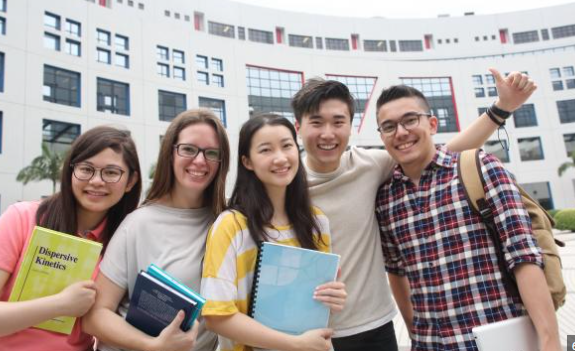The University of Electronic Science and Technology of China (UESTC) ranks highly in electronics and technology, recognized nationally and internationally.
Table of Contents
Overview of University of Electronic Science and Technology of China

History and Development
From its early days as the Chengdu Institute of Radio Engineering, UESTC has evolved significantly, marking its journey with milestones that have shaped it into a prestigious institution. The university’s relentless pursuit of excellence is evident in its significant contributions to China’s electronics industry. It has also consistently expanded its academic disciplines, now covering a wide spectrum from engineering to liberal arts.
Academic Reputation and Programs
UESTC proudly stands as a symbol of academic rigor, with a reputation that resonates across the globe.
Ranking Methodologies
National Ranking Criteria
The criteria typically include:
- Academic Performance: The quality of teaching and the learning environment are assessed.
- Research Excellence: The volume, income, and reputation of research undertaken at the institution. Specific metrics might involve the number of published papers, the quality of publications, and the amount of research income generated.
International Ranking Systems
International ranking systems provide a global perspective, comparing universities from all around the world. These systems often use a range of criteria, some of which include:
- Academic Reputation: Surveys are conducted worldwide to gauge the opinion of academics regarding the best institutions in terms of teaching and research.
- Employer Reputation: Employers are surveyed to determine which universities they perceive as producing the best graduates.
- Faculty-Student Ratio: A higher number of faculty members per student is an indicator of the university’s commitment to high-quality teaching.
- Citations per Faculty: This metric assesses the research impact by calculating the average number of citations obtained per faculty member, indicating the quality and quantity of research output.
- International Faculty and Student Ratio: The proportion of international students and faculty members is a sign of how global an institution is, reflecting its ability to attract talent from across the world.
Analysis of University’s Ranking
Comparison with Other Chinese Universities
The table below summarizes key metrics:
| Metric | UESTC | Other Top Chinese Universities |
|---|---|---|
| Academic Reputation | High | Very High |
| Research Output | Extensive | Extensive |
| Faculty-Student Ratio | Favorable | Favorable to Very Favorable |
| Employer Reputation | Strong | Very Strong |
| International Recognition | Growing | Well-Established |
Subject-Specific Rankings in Electronics and Technology
The following table breaks down its rankings in these specific subjects:
| Subject | UESTC Ranking | Notes |
|---|---|---|
| Electronics Engineering | Top 5 in China | Known for cutting-edge research and industry partnerships |
| Information Technology | Top 10 in China | Recognized for its innovative curriculum and high graduate employability rate |
| Telecommunications Engineering | Top 10 in China | Praised for its state-of-the-art facilities and expert faculty |
Factors Influencing the University’s Ranking
Research Output and Quality
The details include:
- Number of Publications: UESTC produces a significant number of research papers annually, contributing to its visibility and reputation in the academic community.
- Research Funding: With substantial funding, UESTC invests in advanced research facilities and resources, enhancing the quality and scope of its research projects.
- Industry Collaborations: Partnerships with leading tech companies ensure that research is not only theoretical but also practically applicable, driving innovation.
Faculty Excellence and Student Feedback
UESTC excels in these areas through:
- Faculty Qualifications: UESTC boasts a team of highly qualified professors, many of whom are respected leaders in their fields.
- Teaching Methodologies: The faculty employs innovative teaching methods, ensuring that students are engaged and receive a comprehensive understanding of their subjects.
- Student-Faculty Ratio: UESTC maintains an optimal student-faculty ratio, ensuring that each student receives individual attention and guidance.
- Student Satisfaction and Feedback: Regular feedback from students helps the university to continuously improve the quality of its programs and campus facilities.

Implications of the University’s Ranking
Impact on Student Admissions and Opportunities
The high ranking of UESTC significantly influences its admissions process and the opportunities available to its students. Key impacts include:
- Increased Applicant Pool: UESTC attracts a large number of applicants, driven by its reputation for academic excellence and innovation.
- Diverse Student Body: The university’s reputation draws students from across the globe, fostering a multicultural and inclusive campus environment.
- Enhanced Career Prospects: This translates to better job placements and career advancement opportunities for its alumni.
University’s Role in the Global Academic Community
UESTC’s ranking not only elevates its stature domestically but also cements its role in the global academic community:
- Collaborative Research Projects: The university’s high ranking facilitates partnerships with other leading institutions worldwide, driving innovative research and exchange of ideas.
- Influence in Academic Discourse: UESTC greatly influences global academic discussions in electronics and technology through its impactful research and esteemed faculty.
- Attracting International Talent:Its reputation attracts top talents worldwide, creating a diverse academic environment and promoting a global perspective.

